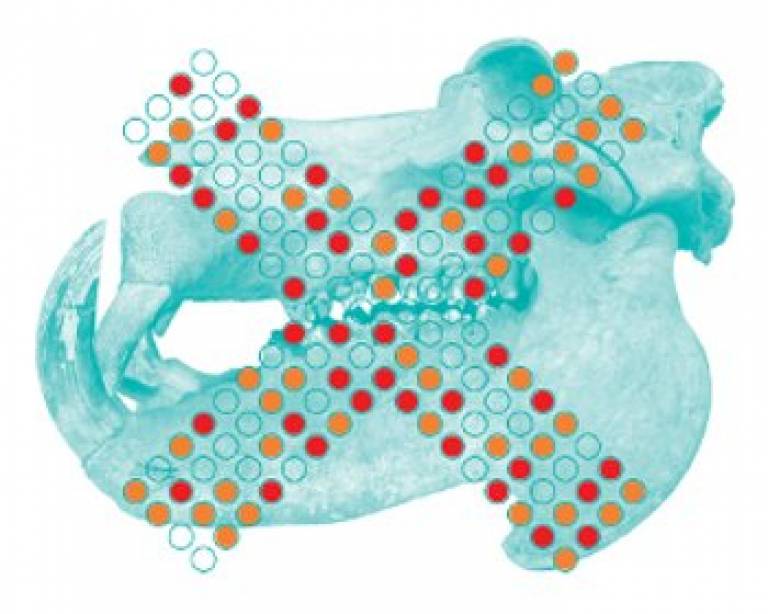Exhibition: Disposal?
1 October 2009
Press release Links:
 guardian.co.uk/culture/2009/oct/19/ucl-disposal-exhibition-agatha-christie" target="_self">Guardian coverage
guardian.co.uk/culture/2009/oct/19/ucl-disposal-exhibition-agatha-christie" target="_self">Guardian coverage
A picnic basket linked to Agatha Christie, soil samples collected before the Channel Tunnel was built and a radioactive rock used in a Nobel Prize-winning experiment feature in a provocative new exhibition at UCL.
Disposal?, which opens on Monday 19 October 2009, invites you to comment on the most challenging question faced by museums today: What should we collect and hold on to and what should we get rid of?
The exhibition includes objects which would not normally be on display, such as a crusher which can apply the weight of 150 hippos, a collection of plastic dinosaurs and slides containing microscopic fossils.
Among these are five objects earmarked for disposal that the public can vote on. This is one of several ways in which people can contribute their views on the collections: on what they think is important, what should be collected and what they feel would be better off elsewhere.
Featured pieces will include:
- A picnic basket belonging to Agatha Christie's husband's second wife Barbara Parker. The husband, Max Mallowan, was a famous archaeologist. Parker donated the hamper and its contents to UCL. The contents included Minoan pottery, a key, a doorknob, beads and a copy of The Times.
- Soil samples collected before the building of the Channel Tunnel. Archaeologists take such samples to see if a site contains archaeological material. These samples were stored at UCL soon after they were taken, but have never been analysed.
- A radioactive mineral sample which emits alpha particles, but which is historically important. William Ramsay (1852-1916), a former head of UCL Chemistry, used it to discover helium in one of a series of Nobel Prize-winning experiments.
The exhibition will also host two events:
- 'Fight at the Museum: Rescue My Object!' on Tuesday 20 October, 6.30pm - 9pm, will see experts battle to convince an audience to save their favourite object housed in different collections at UCL.
- 'Treasured? Hunt' on Wednesday 28 October, 6pm - 9pm, will invite people to seek out intriguing objects and specimens in store and decide for themselves just how treasured objects should be.
Disposing of objects by museums is controversial, conjuring up emotive images of collections thrown into skips or valuable artworks lost to the nation through private sales. With ever-decreasing resources and ever-expanding collections, museums are under serious pressure. Collections are fast becoming unsustainable - ethical but tough decision-making is essential to museums' survival.
In a research-led university such as UCL, collections have to keep pace with cutting-edge innovations and new discoveries. While active collecting always goes on, responsible and regular disposal is essential for collections to stay manageable.
Subhadra Das, UCL Collections Reviewer, says: "UCL Museums & Collections hold thousands of fascinating and historically important objects which are used for teaching and research. Like all museums, they also contain objects whose roles and use are unclear or problematic. Some objects may no longer be useful, some are too big or have become damaged and some should never have been collected. In the past such things have sometimes been disposed of thoughtlessly - by putting them in the skip. This exhibition is about thoughtful disposal."
The exhibition runs from Monday 19 October to Saturday 31 October 2009, is open to the public and is free of charge. Opening hours are Monday-Friday 10am-7pm, Saturday 10am-6pm. The exhibition is in the Chadwick Building, UCL, Gower Street, London WC1E 6BT.
Media contact: Jenny Gimpel
Image: A hippopotamus skull
 Close
Close

